- Bahasa Indonesia
- Slovenščina
- Science & Tech
- Russian Kitchen

Omsk: Western Siberia's hidden gem

A city view of Omsk. Source: Dmitry Feoktistov
Omsk was founded in 1716 when a wooden fort was constructed to house a Cossack unit in the area to protect the expanding Russian frontier from Central Asian nomadic incursions. It served various administrative functions throughout the 1800s and became infamous as a place of exile and incarceration. The city was rundown when selected as a hub for the Trans-Siberian railway in the 1890s. Many international trade companies and foreign consulates relocated here and the remnants of their offices can still be found in the city today.
The mystery of Kolchak’s gold
Omsk became the headquarters of the anti-Bolshevik white army led by Admiral Aleksandr Kolchak in 1918. In late 1918 there was a revolt in the city initiated by a leftist faction (Socialist Revolutionary Party or SPs) with 500 rebel deaths at the hands of Cossacks and Czechoslovak soldiers, a major factor in convincing the SPs to join the Bolsheviks. There is a large Soviet-era monument to the uprising at the corner of Lenina street and Broz Tito street.
Kolchak was entrusted with a large portion of the Tsarist’s gold reserves, yet amazingly lost much of it. Supposedly 250 million rubles were lost (about $8 million at the time). Legend has it that they were buried near the village of Taiga, yet numerous excavations have turned up nothing. The area still attracts the occasional fortune seeker.

Kolchak’s headquarters are located at what is today the Omsk Regional Archives at Broz Tito St., 3. Nothing shows how much times have changed as the imposing Kolchak statue that was unveiled in 2012 around the corner. The statue guards Kolchak restaurant , a four-story culinary complex featuring a steak house, an Irish pub, a Central Asian café and an Italian eatery. For more details on where and how to dig Kolchak's gold, see Top Ten Mysterious Lost Treasures of Russia
Dostoevsky and the Tsar
At 1.15 million people Omsk dwarfs the region’s second largest city, Tara (population 28,000). The city is split by the River Irtysh into two sections (all places of interest are on the right bank) with downtown emanating from the River Om.
Most foreigners have heard of Omsk via writer Fyodor Dostoevsky who spent four years here as a prisoner (1849-1853). He spent most of his time in Omsk in squalor and chains and with no books besides the Bible, however, it left an indelible mark on his memory and influenced his future literary output. There is a statue of the writer in chains grasping a Bible at the corner of Partizanskaya and Spartakovskaya streets, where Dostoevsky undoubtedly stepped many times. A museum dedicated to the author's time in Omsk is located nearby at Dostoevskogo St. 1. The local university is also named for him.

A view of the Assumption Cathedral, Omsk. Source: Lori/Legion-Media
Tarskaya Street is one of the city’s oldest thoroughfares. It features a monument to victims of Stalinist repressions and the Tara gates, originally built in 1792 as one of the four entrances to the Omsk fort. Nearby stands the Assumption Cathedral, one of the largest churches in Siberia. Future Tsar Nicholas II laid the first stone here in 1891 when making his way back to St. Petersburg after his Eastern journey.
In Omsk you are never more than a few steps from the village, made clear when one exits the center to the north, where most houses are wooden and roads unpaved. Stroll along Bulatova and Rabinovicha streets, a well-preserved ensemble of wooden architecture.
Omsk’s cultural heritage
The Pushkin State Library is worth a look with busts of Russian literary figures adorning the front side of the building. At the corner under the big “M” is one of several stations of the never completed Omsk metro. Construction began in 1992, but as of 2014 the project is again dormant due to financing problems.
One of Omsk’s most famous sons is Symbolist painter Mikhail Vrubel (1856-1910). Vrubel ignored contemporary trends and focused on themes from fairy tales, demons and religious subjects and also designed a majolica frieze for the Metropol Hotel in Moscow. Omsk’s Fine Arts Museum is named for him and features a number of his works .

Milhail Vrubel's painting 'Demon Seated in a Garden' (1890)
Over the years a number of tourists have tripped over the monument to Stepanych. This bust of a plumber rising from a sewer was the idea of Omsk’s former mayor after a trip to Slovakia in the 1990s. Stepanych has become one of the symbols of the city.
Omsk is a hockey town, with one of the major teams, Avangard , in the KHL, Russia’s premiere professional league. Russian champions on several occasions, check out a match at Omsk Arena. But if you can’t catch a game there’s a large kiosk featuring the team’s merchandise at the airport.
Siberian punk, jazz and the classics
While Omsk may not be on everyone’s radar musically, it does host a musical theater built just after the war. The building on 10 Let Oktyabrya Street is in the form of an enormous sloping grand piano.

A monument to Stepanych, Lenina Street, Omsk. Photo credit: RIA Novosti/Pavel Lisitsyn
Perhaps Russia’s most famous punk band, Grazhdanskaya oborona (Civil Defence), was formed here in 1982. The band was active until 2008 when lead singer Yegor Letov died of heart failure at age 43. Letov is buried at the Staro-Vostochnoe cemetery. A sprawling graveyard with thousands of graves, fans should stop at the administration for help in locating his grave.

In Russia, Omsk is known among the younger, tech-savvy generation primarily because of the “Omsk bird,” also known as Winged Doom. The origin of what became one of Russia’s most ubiquitous memes comes from a painting by German artist Heiko Müller. One day in 2009 an Internet user posted this painting with the line, “Welcome to Omsk,” at the top. Additional versions menace viewers stating, “Don't try to leave Omsk,” and “Omsk is closer than you think.” Like many popular memes on the Internet, this one went viral and has become something like an unofficial symbol of the city.
All rights reserved by Rossiyskaya Gazeta.
to our newsletter!
Get the week's best stories straight to your inbox
This website uses cookies. Click here to find out more.

- Visit Our Blog about Russia to know more about Russian sights, history
- Check out our Russian cities and regions guides
- Follow us on Twitter and Facebook to better understand Russia
- Info about getting Russian visa , the main airports , how to rent an apartment
- Our Expert answers your questions about Russia, some tips about sending flowers

Russian regions
- Altay republic
- Irkutsk oblast
- Kemerovo oblast
- Khakassia republic
- Krasnoyarsk krai
- Novosibirsk oblast
- Omsk oblast
- Tomsk oblast
- Tuva republic
- Map of Russia
- All cities and regions
- Blog about Russia
- News from Russia
- How to get a visa
- Flights to Russia
- Russian hotels
- Renting apartments
- Russian currency
- FIFA World Cup 2018
- Submit an article
- Flowers to Russia
- Ask our Expert
Omsk Oblast, Russia
The capital city of Omsk oblast: Omsk .
Omsk Oblast - Overview
Omsk Oblast is a federal subject of Russia located in the south-eastern part of Siberia, in the Siberian Federal District. Omsk is the capital city of the region.
The population of Omsk Oblast is about 1,879,500 (2022), the area - 141,140 sq. km.
Omsk oblast flag
Omsk oblast coat of arms.
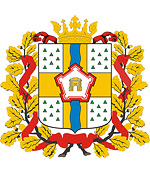
Omsk oblast map, Russia
Omsk oblast latest news and posts from our blog:.
10 November, 2019 / Tomsk - the view from above .
3 July, 2016 / Omsk - the view from above .
20 October, 2012 / The bear at the gate .
2 August, 2012 / Omsk city from bird's eye view .
14 December, 2011 / Time-lapse video of Omsk city .
More posts..
History of Omsk Oblast
Ancient people began to settle in the area of the middle reaches of the Irtysh River about 45,000 years ago. This region became the place of numerous migrations of different peoples, of interpenetration of forest and steppe cultures. In the Middle Ages, the territory of the present Omsk region was part of the Western Turkic Khanate and the Siberian Khanate. As a result, an ethnic group of the Siberian Tatars was formed. This region was also inhabited by Kazakhs and other peoples.
The history of the development of the Irtysh by Russians is connected first of all with the legendary Yermak. Although even before him, in the 15th century, Russian merchants from the Urals visited the Siberian Khanate.
In the early 18th century, major reforms carried out by Peter the Great required large expenses. The first Russian emperor turned his attention to the east. He sent a detachment of Cossacks under the command of the lieutenant-colonel I.D.Bukhgolts from the town of Tobolsk up the Irtysh River in search of gold deposits.
More Historical Facts…
The expedition failed because of resistance from the nomads Dzhungars. Russians were forced to take a step back. In 1716, they founded a fortress at the mouth of the Om River - future Omsk. Russian peasants began to settle in the land around the fortress. To the south of Omsk, a line of outposts was constructed for protection from the nomads.
In 1782, the fortress became a town. Omsk district was formed on the basis of the southern part of Tarsky district and, in 1785, the town of Omsk was given a coat of arms. Omsk became an important center for the study of Siberia and Central Asia. This region like other parts of Siberia was used as a place for political exile.
In the 19th century, the people exiled to Siberia were the Decembrists, Petrashevts, Narodniki, representatives of other revolutionary parties and organizations, participants of the Polish national movement. These people had a major cultural impact on the local population. The great Russian writer F.M.Dostoyevsky was one of the prisoners of the Omsk jail.
In the late 19th and early 20th century, Siberia experienced significant changes. Large-scale migration of peasants led to the rapid growth of the local economy, especially agriculture. Due to its favorable economic and geographical location, at the intersection of the Trans-Siberian Railway and the Irtysh River, Omsk rapidly turned into a large transport, trade and industrial center of Western Siberia, the largest city in Siberia.
During the Second World War, about 100 industrial plants were evacuated from the European part of the USSR to Omsk. They became the basis of the local engineering industry. In 1949, the first refinery in Siberia was constructed in Omsk. In 1954-1956, during development of virgin lands, several large agricultural enterprises were built in the southern part of Omsk Oblast. In the 1970s, Omsk oblast became one of the most economically developed regions of Siberia.
Pictures of Omsk Oblast
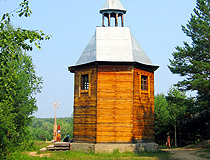
Wooden chapel in Omsk Oblast
Author: Sedov Artem
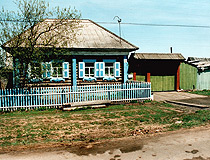
Country house in Omsk Oblast
Author: Heinrich Jena
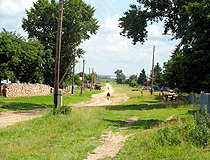
Provincial life in the Omsk region
Author: Baranov Pavel
Omsk Oblast - Features
Omsk Oblast is located in the south of the West Siberian Plain, in the middle reaches of the Irtysh River, with steppes in the south, which turn into forest steppes, forests and marshy tundra in the north. The territory of the region stretches for about 600 km from north to south and 300 km from west to east. In the south, Omsk Oblast borders with Kazakhstan.
The largest cities and towns of Omsk Oblast are Omsk (1,126,000), Tara (28,500), Kalachinsk (21,900), Isylkul (21,700). The main river is the Irtysh with its tributaries (the Ishim, Om, Osha, and Tara). The Trans-Siberian Railway is an important traffic artery. There is an international airport in Omsk.
The climate is continental and sharply continental. The average temperature in January is minus 19-20 degrees Celsius, in July - plus 17-18 degrees Celsius in the northern part and plus 19 degrees Celsius in the south.
Omsk Oblast has such natural resources as oil, natural gas, brown coal, iron ore, various construction materials. Main manufacturing, construction and trade are carried out in Omsk. Industrial sector is represented by military, aerospace and agricultural engineering, petrochemical, light and food industries.
Agriculture is represented by crops, dairy and beef cattle, pig and poultry farming. Cereals (wheat, rye, oats, barley), potatoes, vegetables, sunflower, and other crops are cultivated.

Attractions of Omsk Oblast
A lot of sights can be found in Omsk. The most interesting places located outside the city are:
- Achairsky Convent in the upper reaches of the Irtysh River, 50 km from Omsk;
- St. Nicholas Monastery in the village of Bolshekulache, 20 km from Omsk;
- Nature reserve “Bairovsky” created for the preservation and reproduction of rare and valuable species of birds and animals;
- Batakovo tract - a natural and archaeological park on the left bank of the Irtysh River, 150 km north of Omsk, in Bolsherechensky district;
- Znamenskiy museum of local lore dedicated to the history and nature of Omsk oblast, located in one of the oldest settlements of the region - in the village of Znamenskoye;
- Chudskaya mountain on the left bank of the Irtysh River, 3 km north of Znamenskoye;
- Lake Ulzhay - a relict water reservoir in the northwest of Kurumbelskaya steppe, in Cherlaksky district, 160 km from Omsk;
- Lake Ebeyty in the southwest of the region;
- Lake Platovskoye located to the north-east of the village of Platovo in Polstavskiy district;
- “Bird’s Haven” - a natural park located in Omsk;
- “Devil’s finger” - a rock on the right bank of the Irtysh, 2 km from the village of Serebryanoye, on the territory of Gorky district.
Omsk oblast of Russia photos
Nature of omsk oblast.
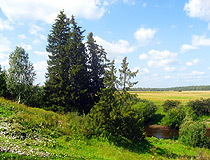
Omsk Oblast landscape
Author: Vitali Ellert
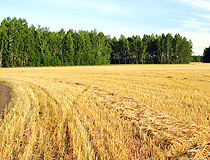
Omsk Oblast scenery
Author: Yury Ermakov
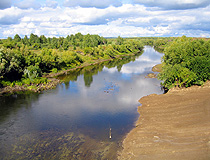
Small river in Omsk Oblast
Author: Andrey Genze
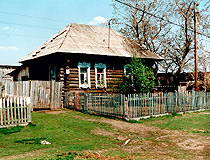
Wooden house in the Omsk region
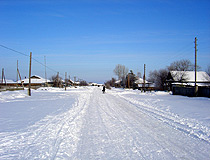
Winter in Omsk Oblast
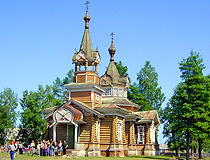
Wooden church in Omsk Oblast
- Currently 2.88/5
Rating: 2.9 /5 (140 votes cast)
Sponsored Links:
Category : Rivers of Omsk Oblast
Federal subjects of the Russian Federation:


IMAGES
VIDEO
COMMENTS
Omsk (/ ˈ ɒ m s k /; Russian: Омск, IPA:) is the administrative center and largest city of Omsk Oblast, Russia.It is situated in southwestern Siberia and has a population of over 1.1 million. Omsk is the third largest city in Siberia after Novosibirsk and Krasnoyarsk, and the twelfth-largest city in Russia. [12] It is an important transport node, serving as a train station for the Trans ...
Omsk is one of the largest cities in Russia, a major scientific, cultural, sports, transport, and industrial center. The administrative center of Omsk Oblast, it is the second most populous city in Siberia. The population of Omsk is about 1,126,000 (2022), the area - 567 sq. km. The phone code - +7 3812, the postal codes - 644000-644246.
Omsk: Historical Review. The city of Omsk is situated on the territory of Middle Priirtysh'e (Middle Irtysh River basin). More than 14 thousand years ago people started to settle in this land. Ancient people settled along Irtysh River, which was guiding point for the moving of tribes during ancient times.
Omsk was founded in 1716 when a wooden fort was constructed to house a Cossack unit in the area to protect the expanding Russian frontier from Central Asian nomadic incursions. It served various ...
Omsk Oblast (Russian: О́мская о́бласть, romanized: Omskaya oblast') is a federal subject of Russia (an oblast), located in southwestern Siberia.The oblast has an area of 139,700 square kilometers (53,900 sq mi). Its population is 1,977,665 (2010 Census) [9] with the majority, 1.12 million, living in Omsk, the administrative center.One of the Omsk streets
Omsk is the capital of Omsk Oblast, Siberia, and is a regional hub for Western Siberia and the Altai mountains in Russia, as well as northern Kazakhstan. Photo: Ymblanter, CC BY-SA 3.0. Ukraine is facing shortages in its brave fight to survive. Please support Ukraine, as Ukraine stands as a defender of a peaceful, free and democratic world.
The main river is the Irtysh with its tributaries (the Ishim, Om, Osha, and Tara). The Trans-Siberian Railway is an important traffic artery. There is an international airport in Omsk. The climate is continental and sharply continental. The average temperature in January is minus 19-20 degrees Celsius, in July - plus 17-18 degrees Celsius in ...
Neighbors: Novosibirsk Oblast, Tomsk Oblast and Tyumen Oblast. Categories: oblast of Russia and locality. Location: Western Siberia, Siberia, Russia, Eastern Europe, Europe. View on OpenStreetMap. Latitude of center. 56.0935° or 56° 5' 37" north. Longitude of center. 73.51° or 73° 30' 36" east. Population.
Omsk, oblast (region), west central Russia, in the basin of the middle Irtysh River.Its entire surface is an extremely flat plain, with extensive marshes and peat bogs in the north and innumerable lakes, of which Lake Tenis is the largest. Many southern lakes are saline. In the north is a dense, swampy forest, or taiga, of pine, fir, spruce, and birch; this yields southward to forest-steppe ...
10. Omsk State Museum of History and Regional Studies. 52. History Museums. Established in 1878, this museum safeguarded valuable collections during World War II and, after the war, expanded its holdings to reflect the region's rapid social development, economic achievements…. 11.
The online webcams will take you to Omsk Oblast (О́мская о́бласть), situated in southwestern Siberia, Russia. It is a federal subject (oblast) bordering Kazakhstan in the south, Tomsk and Novosibirsk oblasts in the east, and Tyumen Oblast in the north and west. The region is entirely flat plains on the basin of the Irtysh River ...
Omsk, Russia. Omsk, city and administrative centre of Omsk oblast (region), west-central Russia, on the Irtysh River at its junction with the Om. Omsk, founded in 1716 as a stronghold at the eastern end of the Ishim fortified line between the Tobol and the Irtysh, developed as an agricultural centre and became a city in 1804.
The history of the city began when a fortress was built on the left bank of the Om River. The city has a historical and cultural complex that includes a series of historical buildings and reconstructed places. The complex offers guided tours, exhibitions dedicated to folk crafts as well as the traditional everyday way of life. ...
Irtysh River in Omsk Oblast (1 C, 14 F) O. Om River (1 C, 23 F) T. Tara River (Irtysh) (1 F) Media in category "Rivers of Omsk Oblast" The following 7 files are in this category, out of 7 total. Confluence of Siberian rivers - the Ishim flows into the Irtysh.jpg 2,513 × 1,410; 479 KB.
Om (river) The Om (Russian: Омь) is a river in the south of the Western Siberian plains in Russia. It is a right tributary of the Irtysh. It is 1,091 kilometres (678 mi) long, and has a drainage basin of 52,600 square kilometres (20,300 sq mi). It rises in the Vasyugan Swamp at the border of Novosibirsk and Tomsk oblasts.
Omsk Oblast. / 56.217°N 73.267°E / 56.217; 73.267. Omsk Oblast ( рус. Омская область) is a oblast {state) in Russia. Omsk oblast has a population of 1.9 million people. [ 5]
Akin to a Cleveland Steamer, the Mississippi Riverboat is accomplished by first getting the runs, then taking a liquid shit on the neck and chest of a woman, at which point the shit runs down her like a wide, muddy river
OKTMO ID. 52615101001. Isilkul ( Russian: Исильку́ль; Kazakh: Есілкөл, romanized : Esılköl) is a town in Omsk Oblast, Russia, located 120 kilometers (75 mi) west of Omsk, the administrative center of the oblast. Population: 24,482 ( 2010 Russian census); [ 2] 26,549 ( 2002 Census); [ 6] 26,430 ( 1989 Soviet census).
The Church is situated on the east side of the square parade ground in a fortress in the city center, near the Irtysh River.This building is an architectural monument of the late Siberian baroque.The movement of architectural forms, flexibility, richness of stucco give emphasis and put it among the best architectural monuments of Omsk of the 18th century.
The Om (Russian: Омь) is a river in the south of the Western Siberian plains in Russia.It is a right tributary of the Irtysh.It is 1,091 kilometres (678 mi) long, and has a drainage basin of 52,600 square kilometres (20,300 sq mi). [1] It rises in the Vasyugan Swamp at the border of Novosibirsk and Tomsk oblasts. [2] The name is probably from the word om "quiet" in the language of the ...
The coat of arms of the Omsk Oblast in Russia were adopted 29 April 2020 by Governor Alexander Burkov.. Design. The official heraldic description reads as follows: On a red field there is a silver cross defaced with a wavy blue pallet, and over both in the middle is a contour of a five-bastioned fortress in red, with one bastion pointing up.
Tara (Russian: Та́ра; Siberian Tatar: Тар Tar) is a town in Omsk Oblast, Russia, located at the confluence of the Tara and Irtysh Rivers at a point where the forested country merges into the steppe, about 300 kilometers (190 mi) north of Omsk, the administrative center of the oblast.Population: 27,318 (2010 Russian census); [2] 26,888 (2002 Census); [6] 26,152 (1989 Soviet census).
Okunevo ( Russian: Окунево) is a rural locality (a village) in the Muromtsevsky District of Omsk Oblast, Russia, situated on the Tara River 240 kilometres north of Omsk. [1] Okunevo is one of a number of modern "places of power", or holy places of Russian new religious movements. [1] The majority of the inhabitants of the village are ...